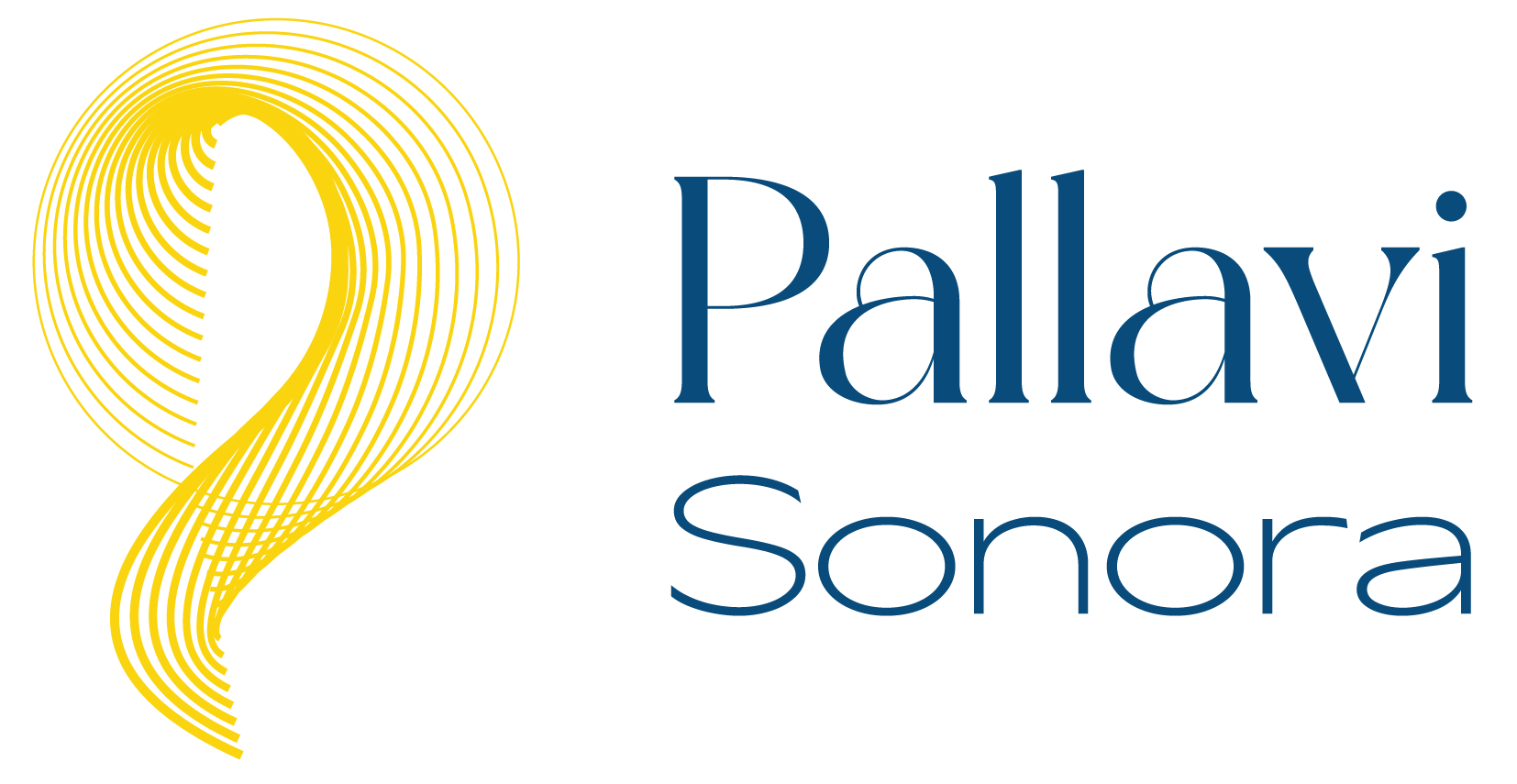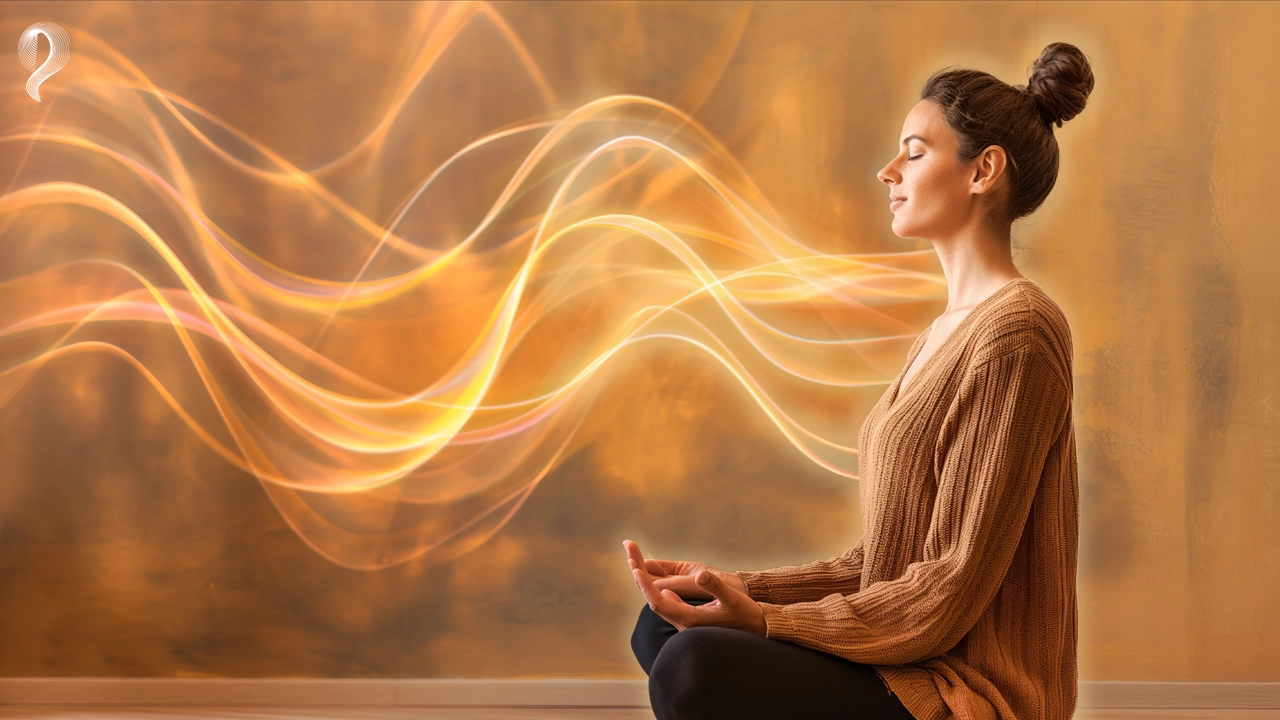In a world filled with constant motion, digital noise, and emotional overload, it’s easy to feel disconnected from ourselves, our purpose, and our inner peace. What if the path back to clarity wasn’t through more effort, but through subtle alignment? That’s the power of Vibrational Therapy — a gentle, non-invasive practice that works with the natural frequencies of your body to restore harmony from the inside out.
Rooted in ancient wisdom and now supported by modern science, vibrational therapy is based on a simple truth: everything is energy. From your thoughts and emotions to your cells and organs, all aspects of your being resonate at specific frequencies. When these frequencies fall out of balance — due to stress, trauma, or disconnection — disharmony begins to manifest, often as physical discomfort, emotional heaviness, or spiritual fatigue.
This blog is your invitation into the world of vibrational healing — a place where sound, sensation, intention, and presence come together to realign your energy and elevate your life. Whether you’re curious, cautious, or called toward something deeper, this journey offers more than relaxation — it offers remembrance. The remembrance of who you are when your energy is whole, flowing, and fully alive.
The Essence of Vibrational Therapy
Vibrational therapy is a holistic healing modality that works with the subtle energy systems of the body to restore harmony, alignment, and well-being. It uses sound, frequency, and intention to shift energetic imbalances and recalibrate the body’s natural rhythm. Unlike conventional approaches that focus solely on the physical body, vibrational therapy addresses the energetic roots of imbalance, reaching the emotional, mental, and spiritual layers of a person.
How Everything (Including You) Is Energy?
At the most fundamental level, we are vibrational beings. Every thought, emotion, organ, and cell has its own unique frequency. When these vibrations are coherent and aligned, we experience flow, ease, and vitality. But when disrupted — due to stress, trauma, or environmental influence — dissonance sets in. That dissonance may show up as fatigue, anxiety, chronic tension, or emotional heaviness. Vibrational therapy helps bring these scattered or blocked frequencies back into resonance, much like tuning a musical instrument.
The Role of Frequency and Vibration in Wellness
Just as sound waves can shatter glass or soothe the nervous system, vibrations carry potent energy. Tools like crystal bowls, gongs, tuning forks, or even the human voice emit specific frequencies that the body responds to intuitively. These vibrations don’t just reach your ears — they penetrate deep into your tissues, calming the nervous system, clearing energetic stagnation, and awakening dormant vitality. It’s subtle, but profoundly real.
In essence, vibrational therapy isn’t about adding more — it’s about attuning what already exists within you. When your energetic field is tuned, your body heals, your emotions soften, and your spirit rises. It’s the art of remembering your natural state of harmony.
Ancient Wisdom, Modern Science — The Roots of Vibrational Healing

Energy Medicine Through the Ages: From Egypt to India
Vibrational healing is far from new. Its origins stretch across continents and civilizations. In ancient Egypt, priests and priestesses used chanting, vowel tones, and sacred instruments in healing rituals, believing sound could purify the body and elevate the soul. In India, the Vedic traditions emphasized Nada Yoga — the path of union through sound — where mantras and rhythmic breath were used to realign body, mind, and spirit.
Tibetan monks have long used singing bowls and gongs as tools for deep meditation and healing, while Indigenous cultures across the Americas, Africa, and Australia have relied on drums, rattles, and voice to connect with spirit and harmonize energy fields. These ancient practices were based on one universal truth: sound is not just heard — it is felt. It moves through the body like water, cleansing, softening, and awakening.
The Science Behind Energy Frequencies and Cellular Harmony
Modern science is beginning to catch up with what ancient healers intuitively knew. At the cellular level, every structure in the body vibrates. When cells vibrate at their optimal frequency, they function with clarity. But under stress, their rhythm becomes chaotic. Studies now show that certain sound frequencies can reduce inflammation, slow heart rate, stabilize brainwaves, and stimulate cell repair — all without touch.
Dr. Masaru Emoto’s experiments with water crystals, though controversial, sparked curiosity in how words, sounds, and intention affect matter. And researchers in cymatics visually demonstrate how sound creates patterns in physical substances, proving that frequency has a tangible form.
Bridging Intuition with Neuroscience and Quantum Biology
Today, vibrational therapy is a bridge between ancient wisdom and emerging science. Neuroscience recognizes that sound impacts the limbic system, influencing emotions, memory, and neuroplasticity. Quantum biology explores how cells communicate through vibrational resonance. And somatic psychology emphasizes the body’s ability to process trauma through sensory input, including sound.
Vibrational therapy doesn’t replace medical care — it enhances it. It honors both the mystery of the unseen and the mechanics of the measurable. It’s a modality where intuition, ritual, and science meet — not in opposition, but in harmony.
The Tools of the Practice — Channels of Vibration
Vibrational therapy draws upon a diverse and soulful range of tools — each acting as a bridge between the physical body and the subtle energetic realms. These tools don’t heal on their own; they create resonant conditions in which your own body can remember how to restore itself. Every instrument, tone, color, or gesture is chosen with intention — to guide you back into alignment.
Sound: Bowls, Gongs, Voice, and Tuning Forks
Sound is perhaps the most recognized and widely used form of vibrational healing. Instruments like Tibetan singing bowls, crystal bowls, gongs, and tuning forks emit pure, resonant frequencies that directly interact with your energy field. These sounds don’t just travel through air — they penetrate tissues, calm the nervous system, and reorganize scattered vibrational patterns.
1 Tibetan Singing Bowls
Traditionally handcrafted, these bowls emit complex, layered tones that help calm the mind and relax the body. Each bowl corresponds to a different chakra or energetic point and, when played with mindful intention, can shift emotional blocks.
2 Crystal Bowls
Made from quartz crystal, these bowls produce powerful, high-frequency tones that are both ethereal and grounding. Quartz is believed to amplify energy, making these bowls especially effective in clearing and activating energy centers.
3 Gongs
Deep, sweeping, and immersive — gongs are sonic tools for energetic surrender. A single strike sends ripples of sound that bypass the analytical mind and dive straight into the subconscious, loosening rigid patterns and stirring deep emotional release.
4 Tuning Forks
These precision-calibrated tools are placed directly near or on the body, offering focused vibrational input to specific areas. They’re often used to balance the nervous system, release physical tension, and recalibrate biofields.
5 The Human Voice
Perhaps the most primal and potent tool of all. Whether through chanting, toning, or humming, the voice carries emotional truth. Vocal vibrations move through the body like a current, helping to release held trauma, open the throat chakra, and invoke deep spiritual connection.
Crystals, Color, and Movement as Vibrational Inputs
Not all vibration is sonic. Crystals, colors, and movement also carry frequency, and when used mindfully, they become powerful tools of energetic rebalancing.
1. Crystals
Each crystal holds a specific geometric structure and vibrational signature. Amethyst calms, rose quartz soothes, citrine energizes. In vibrational therapy, crystals may be placed on chakras or around the body to enhance or draw out certain frequencies. Their energy interacts with the body’s own electromagnetic field, subtly realigning imbalances.
2 .Color Therapy
Colors are frequencies of visible light, and each hue corresponds to a different vibration. For example, red energizes and grounds, while blue cools and calms. Practitioners may use colored lights, scarves, or visualizations during a session to stimulate or soothe different aspects of the energy field.
3. Movement and Breath
Vibrational therapy sometimes integrates subtle movements or breathwork, helping energy to flow freely. Practices like shaking, swaying, or breath-based sound release tension and open blocked pathways. The body, after all, is its own instrument — and even small shifts in posture or breath can generate profound energetic changes.
When layered together — a crystal placed on the heart, a blue light shining nearby, a soft chant in the background — these elements create a multisensory symphony that the body instinctively responds to.
Energy Fields, Chakras, and the Human Biofield

At the heart of vibrational therapy lies the understanding that we are more than skin and bones. We are fields of energy, each surrounded by a unique and dynamic electromagnetic field — often called the biofield. This field records and reflects our emotional, mental, and physical experiences. When the biofield is disordered, the body suffers. When it is clear and coherent, we thrive.
1 Chakras
These are energy centers in the body, traditionally recognized in yogic and Ayurvedic systems. Each chakra governs specific physical organs, emotional themes, and spiritual potentials. From the grounding root chakra to the transcendent crown, these spinning vortexes of energy are often the focal point of vibrational healing. Sound, crystals, or color can be used to balance individual chakras based on what’s needed.
2 The Aura
Surrounding the body like a luminous cocoon, the aura contains layers that hold information about your thoughts, emotions, and energetic health. Practitioners trained in vibrational healing may sense disruptions or tears in this field and use sound or hands-on techniques to smooth and repair it.
3 The Biofield
Recognized even in scientific communities, the biofield represents the measurable electromagnetic field generated by the body, particularly the heart and brain. Vibrational therapy interacts with this field to reset coherence, much like tuning an instrument that has gone slightly off-key.
What’s beautiful about this work is that the body always knows how to respond. These tools don’t force healing — they invite it. They help dissolve static and reconnect you to your natural rhythm. The real healer is the body’s innate intelligence; the tools are simply tuning forks for your soul.
What Happens in a Vibrational Therapy Session?
Vibrational therapy sessions are not clinical procedures; they are sacred rituals of realignment. Each session is a gentle invitation to return to your natural state of balance, where the noise quiets, the body softens, and the soul listens. While every practitioner and client experience is unique, the core intention remains the same: to create space for the body’s natural intelligence to heal through vibration, frequency, and intuitive presence.
The Environment: Sacred Space for Resonance
The moment you step into a vibrational therapy session, you’re entering a space designed to hold, not fix. The environment is quiet, energetically clean, and often softly lit — adorned with crystals, cushions, bowls, and calming scents. Whether it’s in a therapy room or a sacred home space, the setup is intentional and grounding.
You may lie down on a mat, massage table, or nest of blankets, fully clothed and covered in comfort. This space is more than physical — it’s an energetic cocoon where the external world melts away, and deep inner attunement begins.
Sensations, Emotions, and Energetic Shifts
As the session begins, the practitioner may use singing bowls, tuning forks, vocal toning, or other tools to create resonant frequencies around and sometimes directly on your body. These vibrations move through the nervous system and energy field, often bringing physical sensations like tingling, warmth, lightness, or even emotional release.
It’s common to feel waves of emotion, receive intuitive imagery, or fall into a deep meditative state. Your body may twitch, cry, or simply rest — all of which are signs that energy is shifting. Nothing is forced; everything is guided by your body’s innate wisdom.
Integration and Aftercare
After the sounds fade and the tools are set down, you’ll be gently guided back to full awareness. Integration is a key part of vibrational therapy. A few moments of silence or soft reflection help you re-enter the world with care.
The practitioner may offer water, journaling prompts, grounding techniques, or simply space to talk. Because vibrational shifts can continue long after the session ends, you’re encouraged to rest, hydrate, and notice changes over the coming days — emotionally, physically, or spiritually. This is not just a session. It’s a ceremony of remembering your own resonance.
Benefits of Vibrational Therapy
Vibrational therapy is more than a relaxing experience — it’s a deep energetic recalibration that touches every layer of your being. By working through frequencies that bypass the analytical mind and speak directly to your energy field, vibrational therapy can help release what’s stuck, soothe what’s inflamed, and awaken what’s dormant. The benefits are layered and often felt long after a session ends — subtle, profound, and deeply personal.
Physical Restoration and Nervous System Reset
One of the most immediate effects of vibrational therapy is physical relaxation. As sound frequencies interact with the body, they trigger the parasympathetic nervous system, shifting you out of “fight or flight” and into “rest and digest.” This allows the body to begin its natural healing processes: releasing tension, easing muscular pain, and reducing inflammation.
Many clients report better sleep, improved digestion, fewer headaches, and even relief from chronic conditions over time. The vibrational input helps cells operate more coherently, supporting circulation, detoxification, and hormonal balance.
Emotional Clearing and Inner Peace
Because vibrational therapy works beyond language, it can access emotional patterns stored deep in the body, even those we’re not fully aware of. The frequencies help loosen and release suppressed grief, anxiety, fear, or anger, allowing emotional flow to return without judgment or overwhelm.
This is not forced catharsis. It’s a gentle process of making space for what wants to be acknowledged and released. Clients often describe feeling emotionally lighter, more open-hearted, and less reactive in the days following a session.
Mental Clarity and Energetic Grounding
As the mind quiets during a session, brainwaves begin to slow down, moving from the busy beta state into alpha and theta waves associated with meditation, creativity, and inner stillness. This can lead to greater focus, reduced mental chatter, and enhanced decision-making after the session.
By aligning the energetic field, vibrational therapy also creates a grounded presence. You may feel clearer, more centered, and more connected to your own intuition, able to navigate life from a calmer, more aligned space.
Spiritual Alignment and Subtle Transformation
For many, vibrational therapy opens a doorway to something sacred. In this still, resonant space, you may reconnect with your own spiritual truth — whether through insight, imagery, or simple presence. Over time, sessions can lead to a deeper sense of purpose, increased synchronicities, and a stronger connection to your own inner guidance. Clients often describe it as “coming home” — not to an external place, but to themselves.
Who Is It For? Signs You May Need Vibrational Realignment
Vibrational therapy is for anyone seeking balance, not just in the body, but in the mind, emotions, and spirit. Whether you’re navigating physical discomfort, emotional heaviness, spiritual disconnection, or simply feeling off without a clear reason, vibrational therapy offers a gentle, non-invasive path back to wholeness. It doesn’t require a specific diagnosis or spiritual background — only a willingness to listen inward and receive.
You’re Experiencing Persistent Stress, Anxiety, or Emotional Fatigue
If your nervous system feels constantly on edge — easily triggered, exhausted, or overwhelmed — vibrational therapy can help shift your internal state from chaos to calm. Many people turn to this modality after trying everything else and still feeling emotionally burdened or energetically “drained.” Sound and energy work can help release stored tension and restore emotional flow.
You Feel Disconnected, Numb, or Stuck
Sometimes, disconnection shows up as apathy, low motivation, or creative block. You might feel like you’re going through the motions, but nothing truly moves you. Vibrational therapy helps unblock stagnant energy and bring you back into resonance with your own desires, intuition, and joy.
Your Body is Communicating Through Symptoms
Our physical bodies often speak when our energy is out of sync. Recurring headaches, sleep issues, digestive discomfort, or chronic fatigue may be signs of energetic imbalance. While vibrational therapy is not a replacement for medical care, it can support the body’s self-healing mechanisms and ease underlying energetic contributors to physical symptoms.
You’re Healing from Trauma or Life Transitions
Major life events — grief, heartbreak, burnout, loss, or even spiritual awakenings — can leave lingering energetic residue. Vibrational therapy offers a compassionate space to release what’s been held and call back your energy. Many find it especially supportive during times of deep transition or soul searching.
You’re Spiritually Curious or Energetically Sensitive
If you’re drawn to subtle energies, intuitive practices, or holistic healing but don’t know where to begin, vibrational therapy is a beautiful entry point. It’s also deeply supportive for empaths, highly sensitive people, and those on a spiritual path who seek to clear external energies and ground into their own.
The Pallavi Sonora Approach — Healing with Soul and Frequency
At Pallavi Sonora, vibrational therapy is not a method — it’s a sacred art. We view healing not as a clinical fix, but as a soulful reunion. Each session is woven with intuition, care, and energetic precision, honoring your uniqueness and inner wisdom. We don’t just work on you — we work with you, holding space for your body, mind, and spirit to realign at their own pace.
Our Philosophy and Intuitive Method
We believe that healing begins in stillness — when the mind quiets, the breath deepens, and the soul begins to speak. Our sessions are guided intuitively, using a blend of sound, breath, energy work, and vibrational tools tailored to your current energetic state. We don’t follow rigid protocols; instead, we listen to your body’s language, trusting the intelligence of frequency and the rhythm of intuition.
What Makes Our Vibrational Therapy Unique
Every session at Pallavi Sonora is an immersion into vibration, presence, and deep energetic care. What sets us apart is our heart-centered approach: our focus is not just on clearing symptoms, but on nurturing coherence across all levels of your being. We integrate ancient techniques with modern sensitivity, creating a therapeutic experience that feels both grounding and transcendent.
FAQs
u003cstrongu003eWhat exactly is vibrational therapy?u003c/strongu003e
Vibrational therapy is a holistic healing modality that uses frequency, sound, and energy to balance the body, mind, and spirit. It works by influencing your energetic field and cellular vibration, encouraging natural healing and alignment.
u003cstrongu003eIs vibrational therapy the same as sound healing?u003c/strongu003e
Sound healing is one form of vibrational therapy, but the practice also includes tools like crystals, color, movement, and energy work. All these tools use vibrational input to support harmony within your energetic system.
u003cstrongu003eHow many sessions do I need to feel results?u003c/strongu003e
Some people feel deeply relaxed or emotionally lighter after just one session. For deeper energetic shifts or ongoing support, a series of sessions is often recommended. Healing is not linear — it unfolds uniquely for each person.
u003cstrongu003eCan vibrational therapy help with anxiety or burnout?u003c/strongu003e
Yes. By calming the nervous system and realigning energy flow, vibrational therapy can reduce stress, release emotional blockages, and restore a sense of inner peace, making it a powerful tool for managing anxiety and emotional fatigue.
u003cstrongu003eDo I need to believe in energy healing for it to work?u003c/strongu003e
Not at all. Vibrational therapy works with your body’s natural resonance, much like music affects your mood, regardless of belief. An open mind and a willingness to receive are more important than belief in a particular system.
u003cstrongu003eIs it safe for everyone?u003c/strongu003e
Vibrational therapy is generally safe and non-invasive. However, if you have certain medical or mental health conditions, it’s always best to consult your healthcare provider before starting any new wellness practice.
Conclusion — Your Energy is Your Power
In a world that constantly pulls you outward, vibrational therapy brings you back home — to your breath, your body, your essence. It reminds you that healing doesn’t have to be hard or loud. Sometimes, it’s a quiet shift in frequency. A soft remembering of who you truly are beneath the noise.
Your energy is not just something you have — it’s something you are. When it’s in harmony, life flows. You feel clearer, lighter, and more connected. And when it’s misaligned, everything feels just a little off.
At Pallavi Sonora, we invite you to reclaim this power. To honor your body’s subtle signals. To listen deeply. And to trust the gentle medicine of sound and vibration as it guides you back to balance. Because your well-being isn’t outside of you — it’s waiting to be remembered within.




